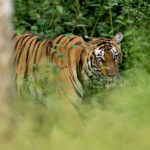Complete list of all Wildlife Sanctuaries of Kerala, India
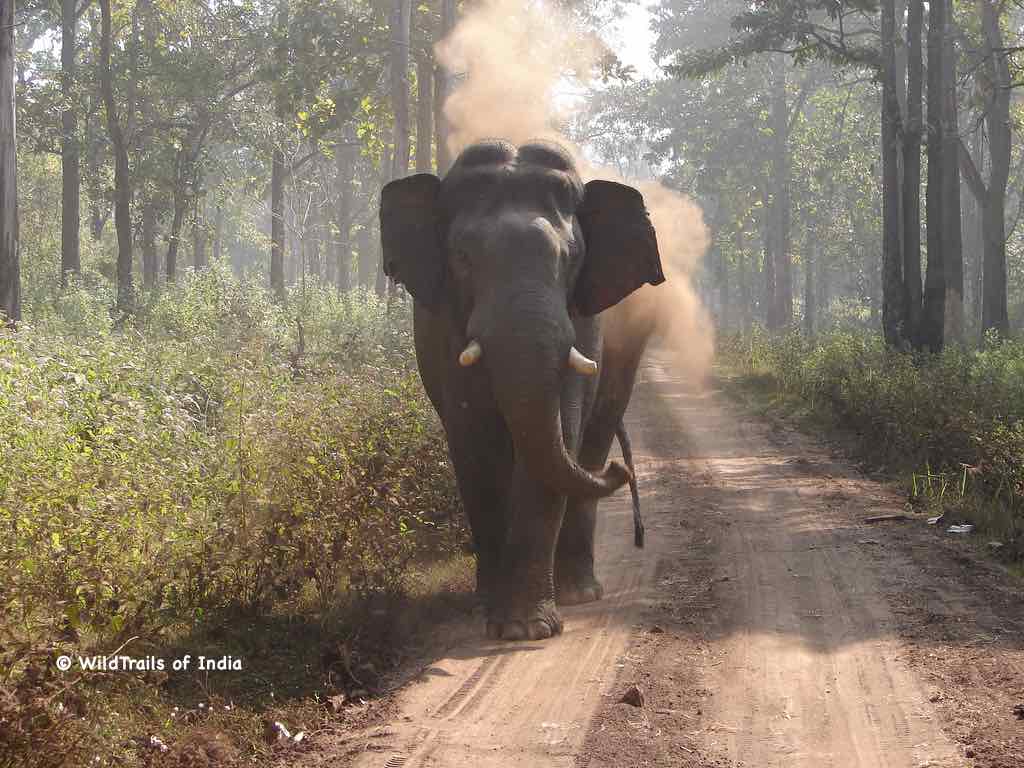
In this article I will cover all of wildlife sanctuaries including national parks, forest reserves, bird sanctuaries, Tiger Reserves, Elephant Reserves of the State of Kerala, India. Also covered are the highlights of the place, best season & time to visit, how to get there, safari / boating/ trekking details, list of animals/birds you can expect to see there , entry/camera fees, of course all of the accommodations nearby and lot more. (These highlights are covered in our App – WildTrails of India – iOS is available, android is on the way).
In the ensuing articles, I will be covering the other Southern sates of Tamil Nadu, Andhra Pradesh, Telangana & Goa before I move onto Central, West, East, North and North Eastern Parts of India. Karnataka is already covered.
[In the mean time, if I have overlooked any other sanctuary of Kerala, India, please do drop me an email to info@wildtrails.in – Thanks!!]
Chinnar Wildlife Sanctuary
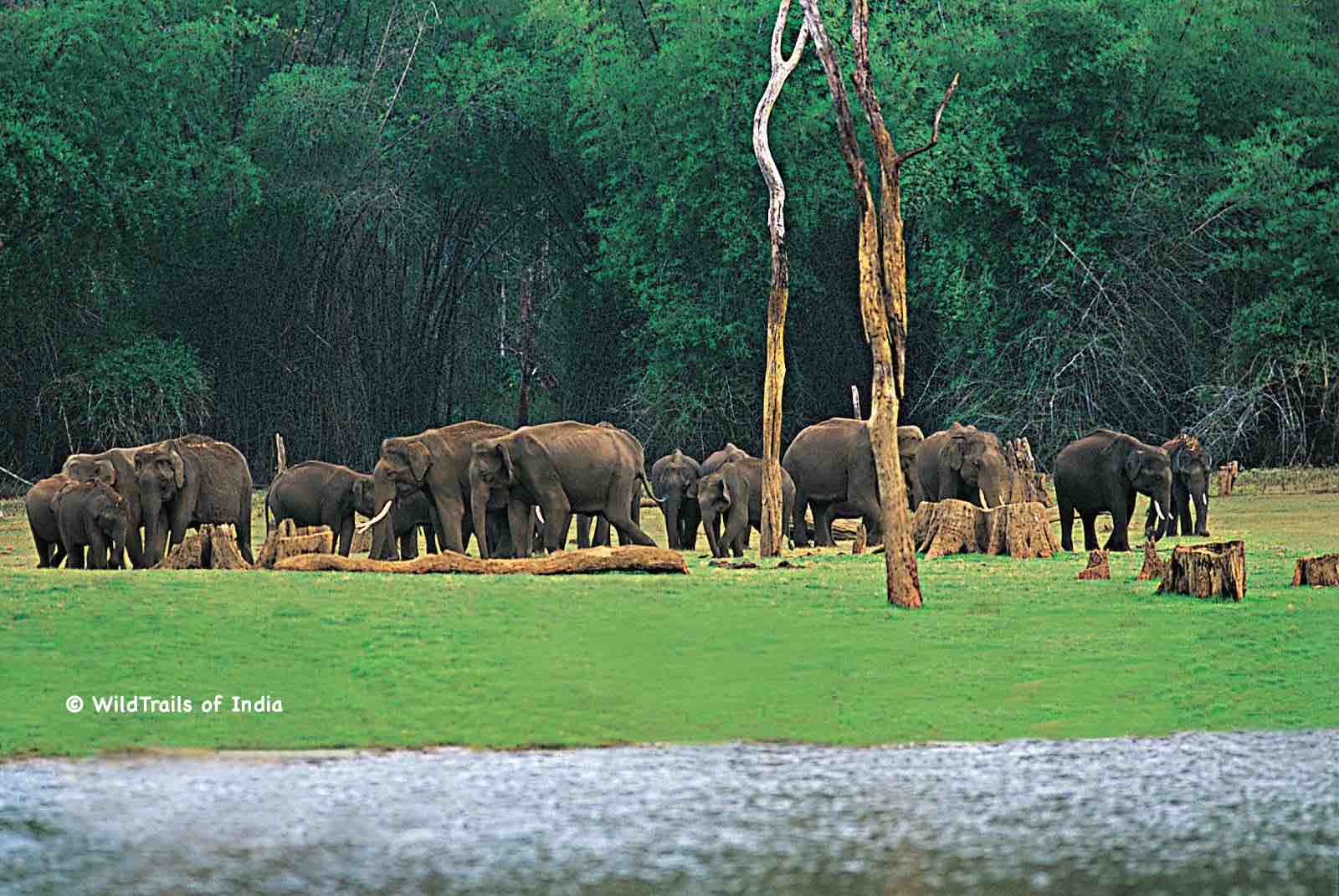
Chinnar Wildlife Sanctuary is a unique protected area located in the rain shadow region in the eastern slope of Western Ghats, adjoining Tamilnadu. The area is diverse in eco systems and rich in ethnic cultural heritage. Chinnar wildlife sanctuary represents wide varieties of animals and plants inimitable to the prickly vegetation. It is one of the best preserve wildlife sanctuaries by government as well as local people. This beautiful wildlife sanctuary is situated in the rain shadow area of Western Ghats of the state of Kerala. It has dry throne forests as well as has array of habitat like dry thorny forest, deciduous forests, shoals, grassland and riparian types because of rainfall and significant variation in altitude. This wildlife sanctuary is full of hillocks, cliffs, rocks, plains and home to various forms of microhabitats. Visit to this wildlife sanctuary is treat to nature lovers.
Chinnar wildlife sanctuary is situated at 18 Km from Marayoor in the the Idukki district. It is spared over more than 90 Sq Km area. It got status of national wildlife sanctuary in the year 1984 from the government of india. There is an Interpretation Centre at Karimutty, two eco shops, one each at Chinnar check post and Aalampetty, an amenity centre, inspection bunglow, dormitory and cafeteria/at Chinnar check post to cater to the needs of visitors.
Eravikulam National Park
![Eravikulam National Park. WildTrails of India - "One Stop Destination for all Indian Wildlife Enthusiasts" [The WildTrails of India is the best way to get all the details about Indian wildlife sanctuaries (best travel times, safari details, animal sightings, forest accommodations pairing, wildlife related activities, prices, etc). Learn more about WildTrails of India here. ios App is here. Android and Web is on the way ]](https://wildtrails.in/wp-content/uploads/2015/10/Eravikulam-National-Park.jpg)
The most sought after destination in Munnar is the Eravikulam National Park, the first of its kind in Kerala, where the endangered Nilgiri Thar is protected. Spread over 97 sq. km., this park holds the largest viable population of Tahr, several other species of rare animals, birds and butterflies. The park offers a magnificent view of the tea plantations and also of the rolling hills caressed by blankets of mist. The park becomes a hot destination when the hill slopes get covered in a carpet of blue, resulting from the flowering of Neelakurinji. Located inside the Eravikulam National Park is the Anamudi Peak, the highest peak in south India standing at a height of 2695m. Entry is restricted but the view can be enjoyed from a distance at Rajamala. Rajamala is the tourism zone of Eravikulam National Park and is a place where one can see Nilgiri Tahr at close quarter.The tourism zone will be closed in calving season during Feb – March every year. Visitors can get assured sighting of Nilgiri Tahr, feel the kurinji and experience the shola grassland ecosystem.
Kumarakom Bird Sanctuary (Vembanad Bird Sanctuary)
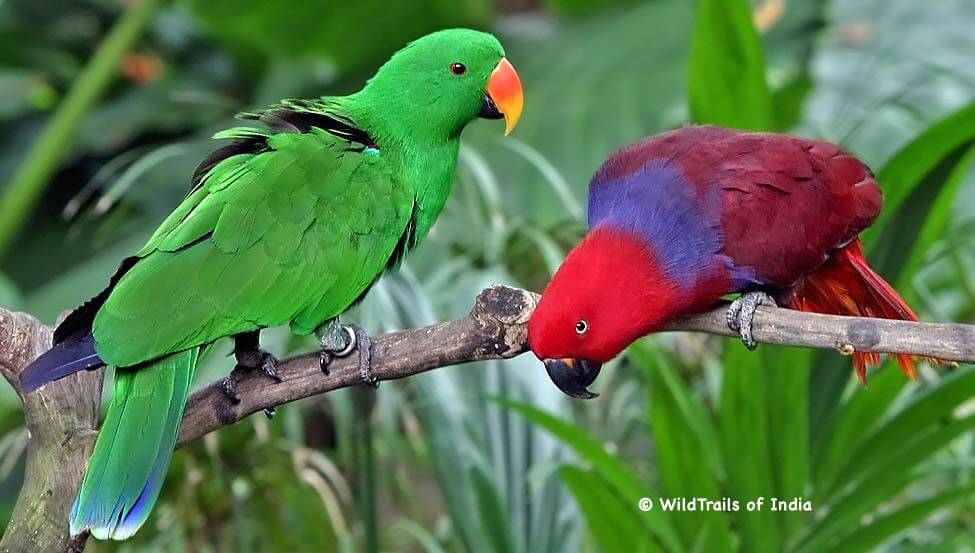
Kumarakom Bird Sanctuary (also known as Vembanad Bird Sanctuary) is situated at Kumarakom in Kottayam district in the Indian state of Kerala, on the banks of Vembanad Lake. Set in the Kerala Backwaters the bird sanctuary is a favourite haunt of migratory birds. Developed in a rubber plantation as a bird sanctuary by an Englishman, the sanctuary was formerly known as Baker’s Estate. Currently, the bird sanctuary is managed by Kerala Tourism Development Corporation. The sanctuary is spread over 14 acres (5.7 ha) on the southern bank of the Kavanar River.There is a system of paths for moving around within the sanctuary. Beyond the sanctuary, one can take a boat ride in Vembanad Lake or along the Kavanar River. Kumarakom is 14 kilometres (8.7 mi) from Kottayam. State Highway No. 1 leads to Kochi and Thiruvanthapuram in opposite directions. Kochi International Airport at Nedumbassery is 106 km (66 mi) from Kumarakom. Neighbouring areas such as Kaipuzha Muttu, Pathirmanal, Narakathara, Thollairam Kayal, and Poothanpandi Kayal are also good locations for spotting birds.
Peppara Wildlife Sanctuary
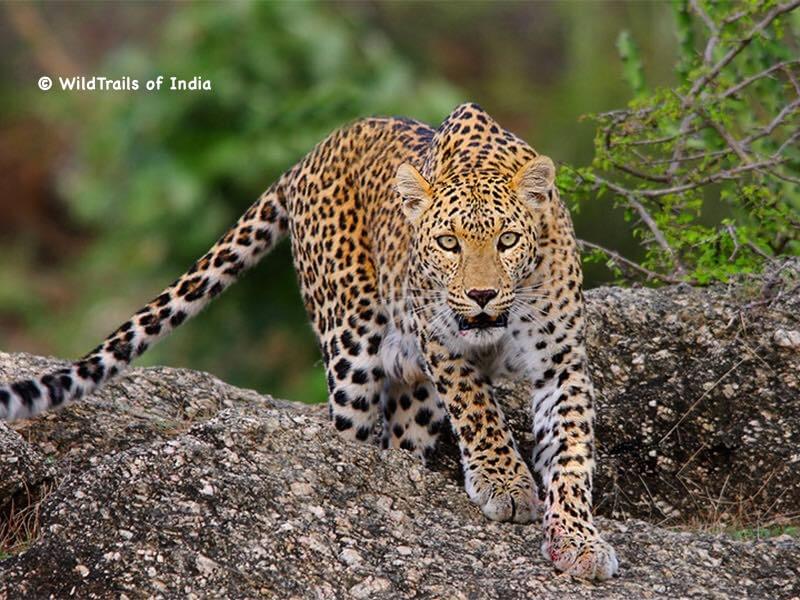
Lying on the outskirts of the capital city, the Peppara Wildlife Sanctuary is spread over an area of 53 sq. km. on the Western Ghats and was established in 1938. The place is fascinating for its damsite, thick forest areas, crystal clear streams and rocky terrains ideal for adventure expeditions.
The sanctuary has a rich population of mammalian fauna and is emerging as a big attraction to wildlife enthusiasts and ornithologists. Asian elephant, sambar, leopard, lion-tailed macaque, can be seen here. Birdlife includes the endemics like Malabar Grey Hornbill, Whitebellied Treepie, Small Sunbird, etc.The Peppara Wildlife Sanctuary constitutes the catchments of the Peppara Dam on the Karamana River near Thiruvananthapuram, India.
The Peppara Dam was commissioned in 1983 to augment the drinking water supply to Thiruvananthapuram city and suburban areas. Considering the ecological significance of the area, it was declared a sanctuary in 1983. The area was formerly a part of the Paruthippally range of the Thiruvananthapuram Territorial Division. Forests consist of part of the Palode reserve (24 square kilometres (9.3 sq mi)) and part of Kottoor reserve (29 square kilometres (11 sq mi)). The total water spread of the reservoir is 5.82 square kilometres (2.25 sq mi). The Peppara Wildlife Sanctuary is situated on Thiruvanthapuram-Ponmudi Road, about 50 km northeast of Thiruvananthapuram. Forest types include West coast tropical evergreen, Southern hilltop tropical evergreen, West coast semi-evergreen, Southern moist mixed deciduous forest, Myristica swamp forest, sub-montane hill valley swamp forest etc. The sanctuary has a rich population of mammalian fauna and is emerging as a big attraction to wildlife enthusiasts and ornithologists. 43 species of mammals, 233 species of birds, 46 species of reptiles, 13 species of amphibians and 27 species of fishes are reported from the sanctuary.
To get the detailed info of the place, best season & time to visit, how to get there, safari details / boating/ trekking details, list of animals/birds you can expect to see there , entry/camera fees, and of course all of the accommodations nearby, please download the app or send us an inquiry:
Periyar Wildlife Sanctuary (Periyar Tiger Reserve, Periyar National Park, Thekkady Wildlife Sanctuary)
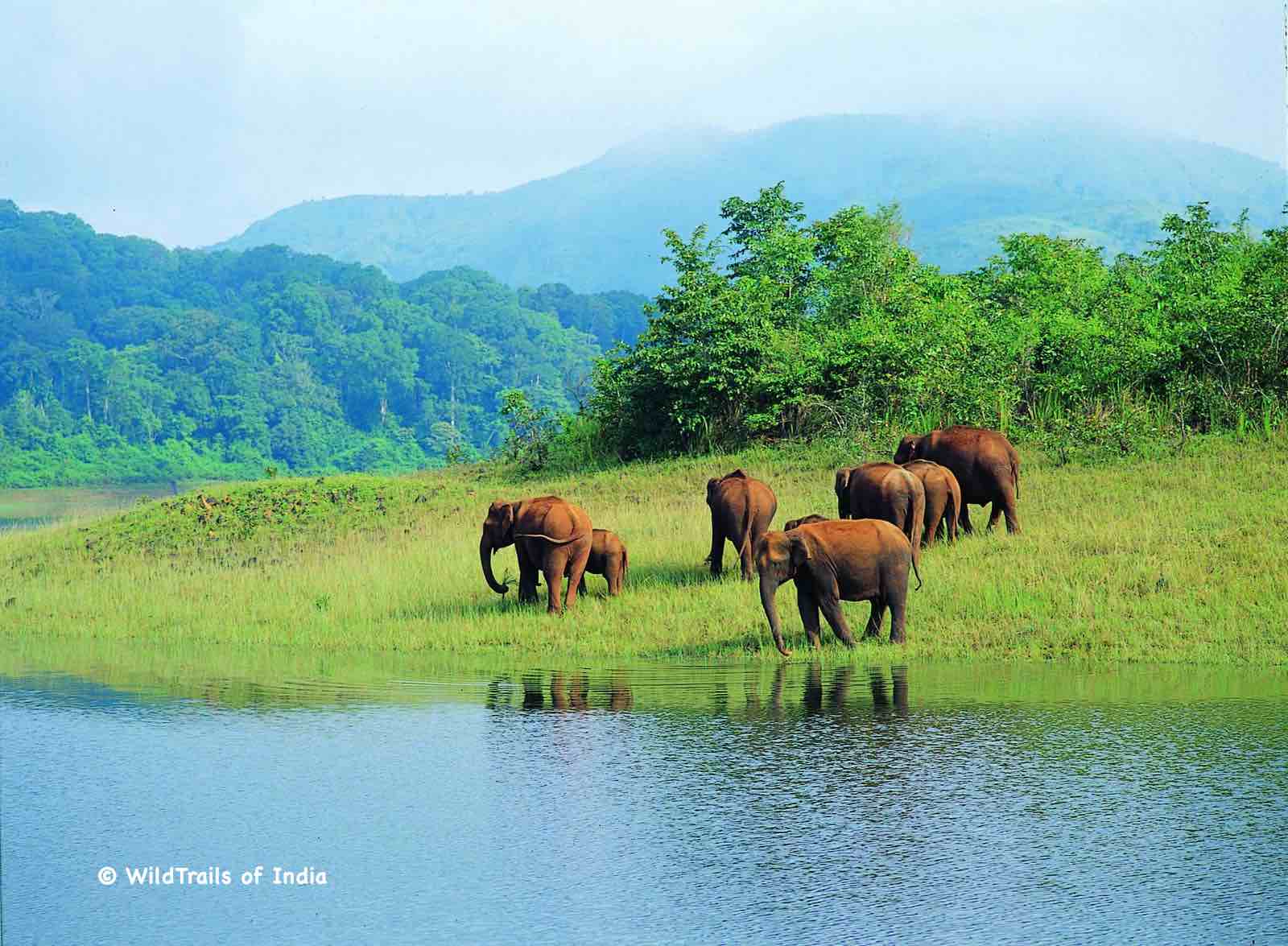
Periyar Tiger Reserve, Thekkady, is an example of nature’s bounty, with great scenic charm, rich bio diversity and providing veritable visitor satisfaction. Sprawled over an area of 925 Sq .km., Periyar is one of the 27 tiger reserves in India. Zealously guarded and efficiently managed reserve is a repository of rare, endemic and endangered flora and fauna and forms the major watershed of two important rivers of Kerala, the Periyar and Pamba. People oriented and park centered community based ecotourism is the hallmark of Periyar Tiger Reserve.
These programmes are conducted by local people responsible for the surveillance of the vulnerable parts of the reserve. By taking tourists along, they are involved in the conservation of the forests of Periyar and some valuable revenue is generated for community welfare. People who once made a living by illegal operations in the forests have since become forest protectors and earn their livelihood through these programmes. Hence, as a visitor, when you join them in any of these programmes,you are directly contributing towards forest conservation and community welfare. Set high in the ranges of the Western Ghats, in God’s Own Country, Kerala, is the Periyar National Park and Tiger Reserve. Periyar wildlife sanctuary has a picturesque lake at the heart of the sanctuary.
Formed with the building of a dam in 1895, this reservoir meanders around the contours of the wooded hills, providing a permanent source of water for the local wildlife. Though its a Tiger Reserve, tourists come here to view the Indian elephants in the act of ablution and playfulness by the Periyar lake. BTW please note eriyar Tiger Reserve is divided into two division viz. Periyar East and Periyar West. Periyar East is made up of Thekkady, Periyar and Vallakkadavu ranges, while Periyar West division comprises Azhutha and Pampa ranges. All tourism activities at PTR take place at Thekkady, in Thekkady range.
Silent Valley National Park
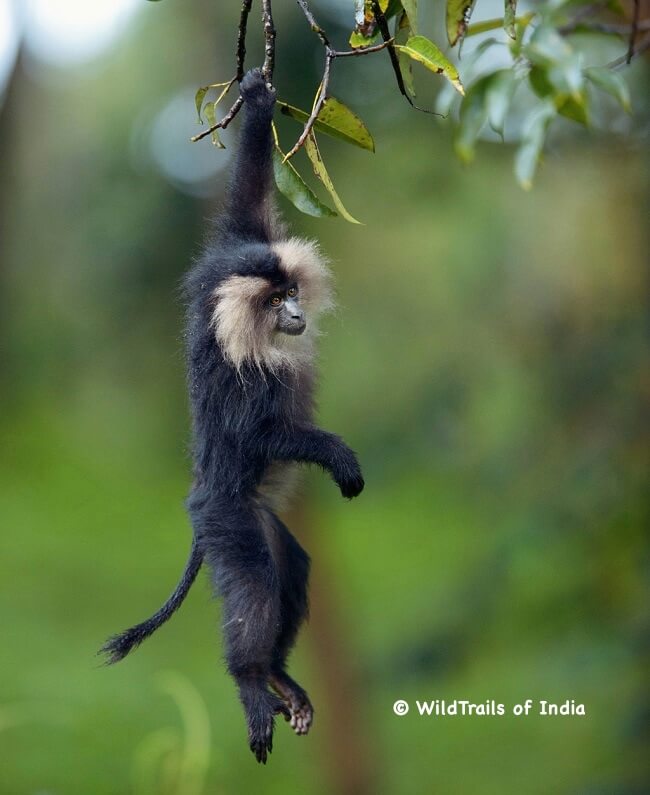
Silent Valley National Park is a national park with a core zone of 237.54 square kilometres (91 sq mi) (making it the largest national park in Kerala). It is located in the Nilgiri Hills, within the Palakkad District of Kerala, South India. This region was explored in 1847 by the botanist Robert Wight, and is a setting for the epic Mahabharatha. This park is one of the last undisturbed tracts of South Western Ghats mountain rain forests and tropical moist evergreen forest in India. Contiguous with the proposed Karimpuzha National Park (225 km2) to the north and Mukurthi National Park (78.46 km2) to the north-east, it is the core of the Nilgiri International Biosphere Reserve (1,455.4 km2), and is part of The Nilgiri Sub-Cluster (6,000+ km2), Western Ghats World Heritage Site, recognised by UNESCO in 2007.
The Silent Valley region is locally known as “Sairandhrivanam”, which in Malayalam means Sairandhri’s Forest. Sairandhri is Draupadi, the wife of the Pandavas in the epic Mahabharatha, who disguised herself as Sairandhri, the maid of a queen named Sudeshna, while her family was in exile.[4] The Pandavas, deprived of their kingdom, set out on a 13-year exile. They wandered south, into what is now Kerala, until one day they came upon a magical valley where rolling grasslands met wooded ravines, a deep green river bubbled its course through impenetrable forest, where at dawn and twilight the tiger and elephant would drink together at the water’s edge, where all was harmonious and man unknown. Beside that river, in a cave on a hill slope, the Pandavas halted.
The first Western investigation of the watersheds of the Silent Valley area was in 1857 by the botanist Robert Wight.The British named the area Silent Valley because of a perceived absence of noisy cicadas. Another story attributes the name to the anglicisation of Sairandhri. A third story, refers to the presence there of many lion-tailed macaques Macaca silenus. In 1914 the forest of the Silent Valley area was declared a reserve forest, however, from 1927 to 1976 portions of the Silent Valley forest area were subjected to forestry operations.
Thattekkad Bird Sanctuary (Salim Ali Bird Sanctuary)
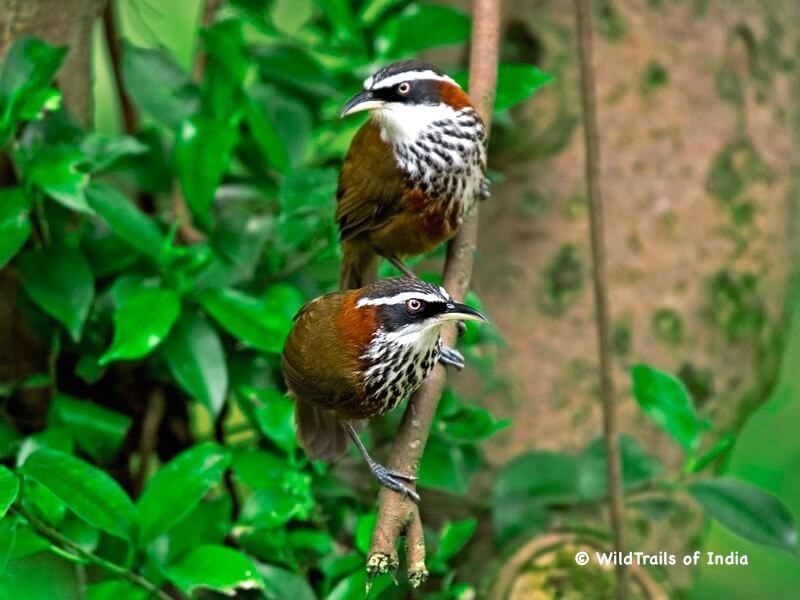
The Thattekkad Bird Sanctuary, covering an area of barely 25 km2, and located about 12 km from Kothamangalam (Kerala state, India), was the first bird sanctuary in Kerala. Salim Ali, one of the best known ornithologist described this sanctuary as the richest bird habitat on peninsular India. Thattekkad literally means flat forest, and the region is an evergreen low-land forest located between the branches of Periyar River, the longest river in Kerala. The Thattekkad Bird Sanctuary has a rich and varied birdlife. Several species of birds, both forest birds as well as the water birds, visit the sanctuaries. Thattekkad is made up of tropical evergreen and deciduous forests and some grassland patches. This globally acclaimed bird sanctuary owes much of its fame to Dr. Salim Ali, the internationally renowned ornithologist. After his famous bird survey of Travancore in the early 1930s, he reported that this area is extremely rich in bird diversity and that it should be made into a bird sanctuary. Thus his efforts were instrumental in the formation of this sanctuary to a large extent. More than 300 species of birds are found here.
Spread across 25 sq. km. the sanctuary lies between the tributaries of the River Periyar like a peninsula. Birds like Srilankan Frogmouth, Racket tailed Drongo, Bronzed Drongo, White bellied Treepie, Shama, Yellow-browed Bulbul, Rufous Babbler, Malabar Parakeet, Whitebellied Blue Flycatcher, Malabar Grey Hornbill, are some of the birds that can be easily seen here. Thattekkad also has extensive plantations of teak, rosewood, mahogany. The dense forest is also home to nearly 28 species of mammals and about 9 species of reptiles.
Tholpetty Wayanad Wildlife Sanctuary

Tholpetty (& Muthunga) forests in the Wayanad Wildlife Sanctuary are the foremost and targeted tourism destinations in Wayanad District. Muthanga and Tholpetty are the two ecotourism centers in Wayanad Wildlife Sanctuary. Visits to these ecotourism centers provide unforgettable wilderness experience, frequent sightings of free ranging wildlife like herds of elephants, guars, deers, monkeys, tigers, leopards, bears, many species of reptiles, fishes, butterflies, birds including vultures etc, valuable nature education information from interpretation centres etc Medicinal plants’ garden, Birth Star Plants’ (Zodiac Plants) Garden, Muthanga Elephant Camp with 3 tuskers and one female calf, traditional tribal folk lore etc are other attractions in Muthanga.
Ecotourism in Muthanga and Tholpetty is much helpful in creating deep conservation awareness in the minds of visitors. It is much educative and recreational too. It is a main source of livelihood income for local tribes including tourist guides. Ecotourism in these two centers are managed by Muthanga and Tholpetty Eco-Development Committees (EDCs) under supervision of Kerala forest department. Tholpetty sanctuary is located 20 km east of Mananthavady, 13 km from Thirunelly on the Kodagu Road.
To get the detailed info of the place, best season & time to visit, how to get there, safari details / boating/ trekking details, list of animals/birds you can expect to see there , entry/camera fees, and of course all of the accommodations nearby, please download the app or send us an inquiry:
Muthanga Wayanad Wildlife Sanctuary
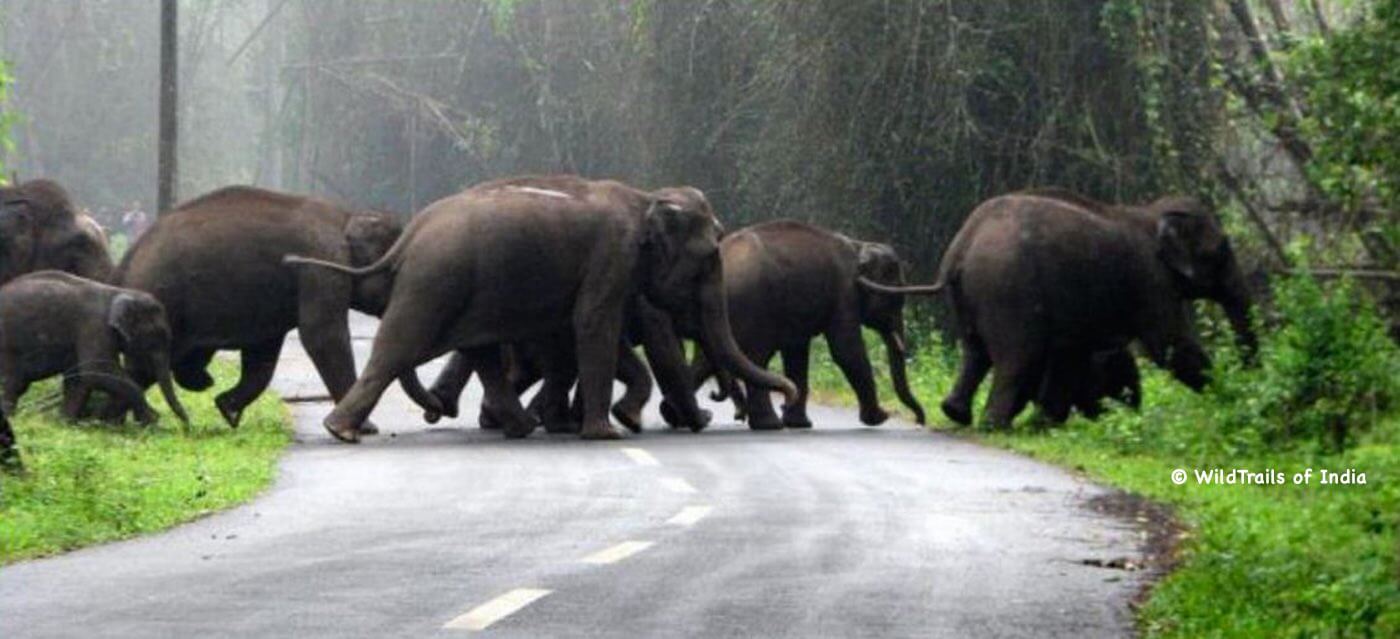
Established in 1973, Muthanga Wildlife sanctuary is contiguous to the protected area network of Nagarhole and Bandipur of Karnataka on the northeast and Mudumalai of Tamil Nadu on the southeast. Rich in bio-diversity, the sanctuary is an integral part of the Nilgiri Biosphere Reserve. The management lays emphasis on scientific conservation with due consideration for the general lifestyle of the tribals and others who live in and around the forest region.
The Sanctuary has a large population of pachyderms and has been declared a Project Elephant site. Muthanga and Tholpetty forests in the Wayanad Wildlife Sanctuary are the foremost and targeted tourism destinations in Wayanad District. Muthanga and Tholpetty are the two ecotourism centers in Wayanad Wildlife Sanctuary. Visits to these ecotourism centers provide unforgettable wilderness experience, frequent sightings of free ranging wildlife like herds of elephants, guars, deers, monkeys, tigers, leopards, bears, many species of reptiles, fishes, butterflies, birds including vultures etc, valuable nature education information from interpretation centres etc Medicinal plants’ garden, Birth Star Plants’ (Zodiac Plants) Garden, Muthanga Elephant Camp with 3 tuskers and one female calf, traditional tribal folk lore etc are other attractions in Muthanga.
Ecotourism in Muthanga and Tholpetty is much helpful in creating deep conservation awareness in the minds of visitors. It is much educative and recreational too. It is a main source of livelihood income for local tribes including tourist guides. Ecotourism in these two centers are managed by Muthanga and Tholpetty Eco-Development Committees (EDCs) under supervision of Kerala forest department. Muthunga sanctuary is located 13 km from Sultan Bathery Kerala.
Begur Wayanad Forest Reserve
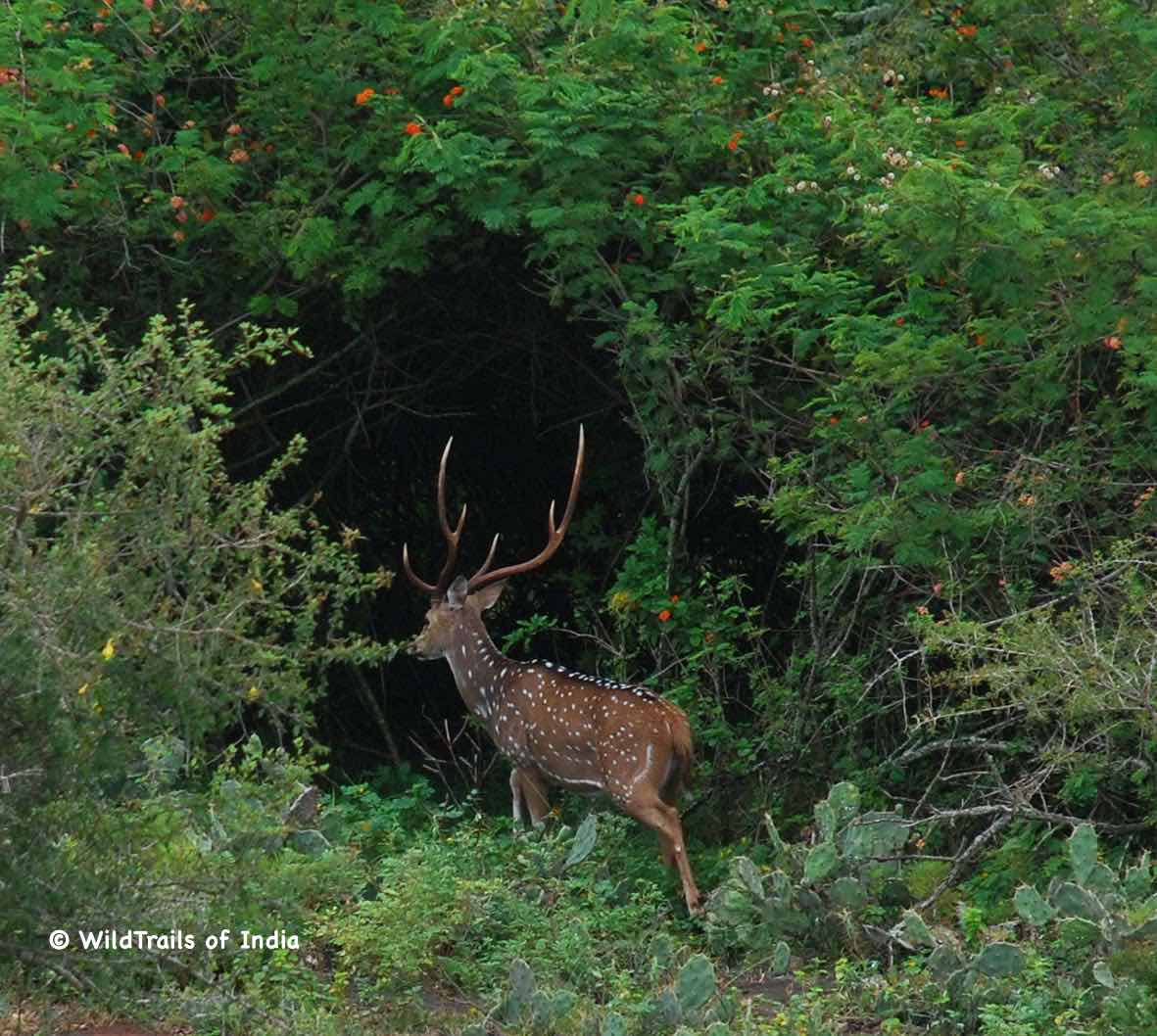
Located in Western Ghats, Begur Wildlife Sanctuary is among the lesser known sanctuaries in the country. Situated 30 km from Mananthawady in Wayanad district of Kerala, Begur Wildlife Sanctuary is home to a wide variety of exotic flora and fauna. Surrounded by mist-clad Western Ghats, the dense green cover and thriving wildlife population is a pleasure to nature lovers and wildlife enthusiasts. The green cover mainly comprises of deciduous forest and west coast semi evergreen forest.
The sanctuary is a treat for wildlife enthusiasts and photographers as one can spot bear, bison, civet cat, elephants, jungle cat, monkeys, panther, spotted deer, wild boar, wild dog, etc. Due to scarcity of water in the neighbouring sanctuaries like Bandipur, Nagarhole and Mudamalai, Begur wildlife sanctuary attracts large number of animals and birds during December-May. Along with Bandipur-Madhumalai-Nagarhole-Wayanad Wildlife Sanctuary, Begur houses a few hundred tigers. The forests are spread across three states — Kerala, Karnataka and Tamil Nadu.
Sightings of black bulbul, jungle fowl, kingfisher, laughing thrush, peafowl, myna, woodpecker, etc. are common in the park. Flora varieties include teak, eucalyptus, rosewood, vengal, etc.
Mangalavanam Bird Sanctuary
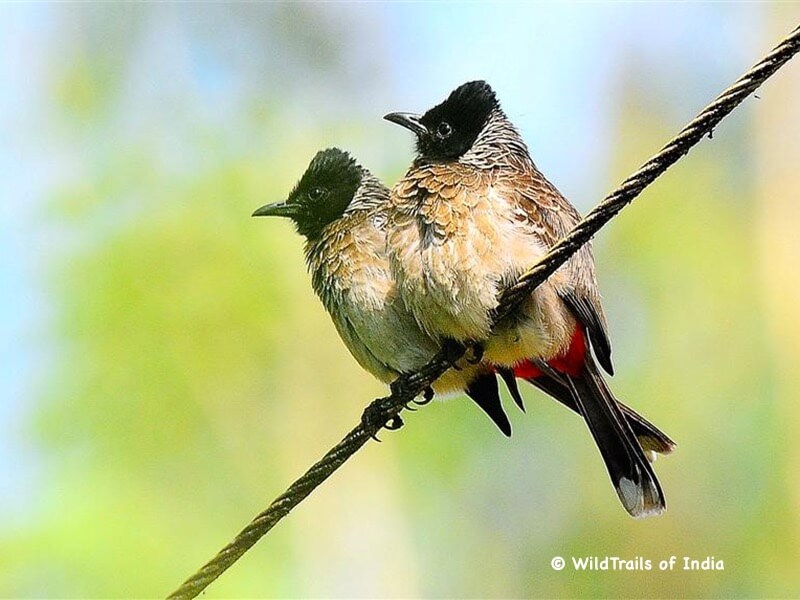
Mangalavanam Bird Sanctuary. Mangalavanam is an ecologically sensitive area situated at the centre of the Indian city of Kochi. It is situated behind the Kerala High Court building. It is a nesting ground for a large variety of migratory birds and supports many types of mangroves. The Managalavanam is often regarded as the “green lung of Kochi”, considering its role in keeping the city’s air pollution under check. The area is a roosting place for many kinds of resident and migratory birds. Mangalavanam is primarily a bird refuge.
A bird survey conducted in May 2006 found that there were 194 birds belonging to 32 species. The total number of bird species recorded so far from the area is 72. An incredible green spot with an extensive variety of life and that too amid a buzzing metro! Not ready to believe? Then visit Mangalavanam Bird Sanctuary, an ecologically sensitive area situated at the centre of Kochi behind the Kerala High Court building fittingly dubbed as the ‘green lung of Kochi’. Primarily a bird refuge, the innate appeal of Mangalavanam is augmented by the Arabian Sea which borders the sanctuary and adds to it a panoramic ambiance.
Mangalavanam, a nesting ground for a large variety of migratory birds, is a paradise for birdwatchers and twitchers. This green paradise is also a roosting place for resident as well as migratory birds. A survey conducted in 2006 revealed that there were 194 birds belonging to 32 species, in Mangalavanam.
Thickly imbedded with a variety of trees and plants, including teak, the sanctuary enjoys a cool temperature. Mangalavanam also supports many types of mangroves. Amid the thick greenery of Mangalavanam cascades a shallow tidal lake bordered with thick mangrove vegetation. The lake is connected to the Cochin backwaters by a canal. And down under the silent depth of this water lives seven species of fishes Anabas testudineus, Striped panchax, Orange chromide, Etroplus suratensis, Malabar swamp eel, Blackline rasbora and Sarotherodon. In the fresh air of Mangalavanam flies 17 species of butterflies, the little beauties that bedeck the sanctuary with multitudes of hues. The best time to visit the sanctuary are the early summer months, especially from mid-January to early-March.
Chimmini Wildlife Sanctuary (Chimmony Wildlife Sanctuary)
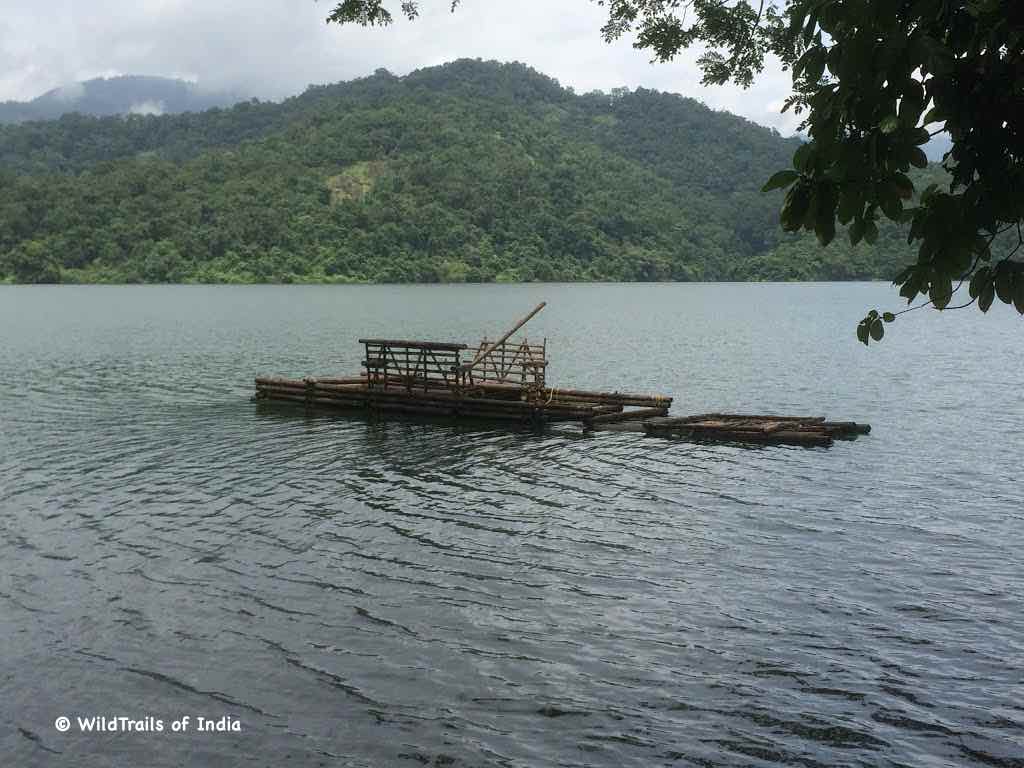
The dense tropical forests of Chimmini, shelter diverse flora and fauna. The dam across the Chimmini river offers a breathtaking view. This picturesque picnic spot is a favorite haunt of the local people. Located in the Mukundapuram Taluk of Thrissur district, Chimmini is only a tow-hour drive from Kochi. The Chimmini Wildlife Sanctuary which was established in 1984, lies contiguous with the Peechi – Vazhani sanctuary. The sanctuary is endowed with scenic beauty beyond compare. Living here in joyful abandon are elephants, sambars, gaurs, Malabar squirrels, sloth bears etc.
Chimmony wildlife sanctuary located in the Western Ghats, is one of the world’s 25 bio-diversity hot-spots, the haven of innumerable species of endangered plants and animals. (Mammals 39 Species, Birds 160 Species, Reptiles – 25, Amphibians – 14 & Fish – 31). The total area of this wild life sanctuary considered as a global mega-diversity zone comprising several local species of living organisms and virgin forests come to around 85.067 sq km inclusive of the Chimmeney Lake.
Set up in 1984, this sanctuary forms part of the Mukundapuram Taluk of Thrissur District’. The distance is 60 km from the Kochi International Airport and 36 km from Thrissur town. It comes under the Peechi Wild Life Division. The forest department organises trekking and bamboo rafting programmes in and around the sanctuary. But the best of all experiences is the Moonlight Sonata, which involves rafting on full moon lights.
To get the detailed info of the place, best season & time to visit, how to get there, safari details / boating/ trekking details, list of animals/birds you can expect to see there , entry/camera fees, and of course all of the accommodations nearby, please download the app or send us an inquiry:
Peechi-Vaazhaani Wildlife Sanctuary
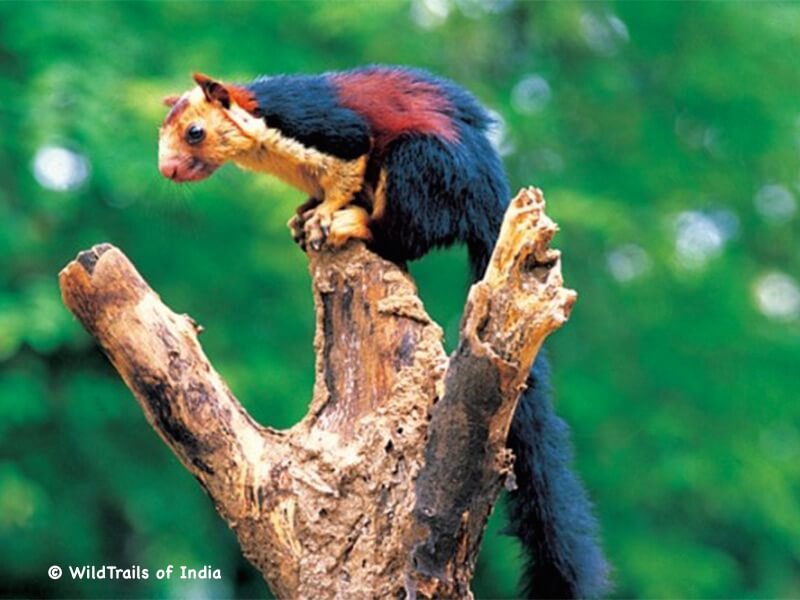
Peechi vazhani wildlife sanctuary is the second oldest wildlife sanctuary of the state of the Kerala. This sanctuary is situated in Thrissur district of the state of the Kerala. It comprises of parts of Bahranipacha mala, Paravattanimala and Machadmala regions. This sanctuary was established in the year of 1958. It includes the forests of Nellivampathi and Palapilli with area of Chimmony wildlife sanctuary. The sanctuary covers total area of 125 Sq. Km.
The sanctuary is blessed with evergreen forests because this region witnesses near about 3000 mm rainfall in monsoon. The highest peak of the sanctuary is Ponmudi with an elevation of 923 m and it is best for trekking activities. Numerous streams flow through the sanctuary and provide ample water for wildlife habitats. The sanctuary has different types of forests like tropical semi-evergreen forests, tropical evergreen forests and moist deciduous forests. These forests support for harmonious ecosystem.
The sanctuary is home for more than 39 species of animals, 30 species of reptiles, 176 species of birds, 40 species of fish and 17 species of amphibians. The common animals like tiger, sloth bear, leopard, sambar, elephant, bonnet macaque, slender loirs and Niligiri langur found in rich numbers. Tourists can also spot other mammals like deers, barking deers, elk, bison, fox, spotted deer and many more. The sanctuary is also home for native as well as migratory birds. It is also heaven for snake lover because they can spot more than 10 species of snake here. Peechi dam is popular picnic spot because of beautiful botanical garden, rippling fountains and boating facility. The surrounding of dam is cover by lush green forest and offers breathtaking view to visitors. Tourists can take cruise ride to see the beauty of forests.
The sanctuary is a wonderful location of trekking and for a nature walk. Nature camps are held frequently in the sanctuary. Tourists have to take prior permission for trekking from the forest department.
Chenthuruni Wildlife Sanctuary (Shenduruny Wildlife Sanctuary)
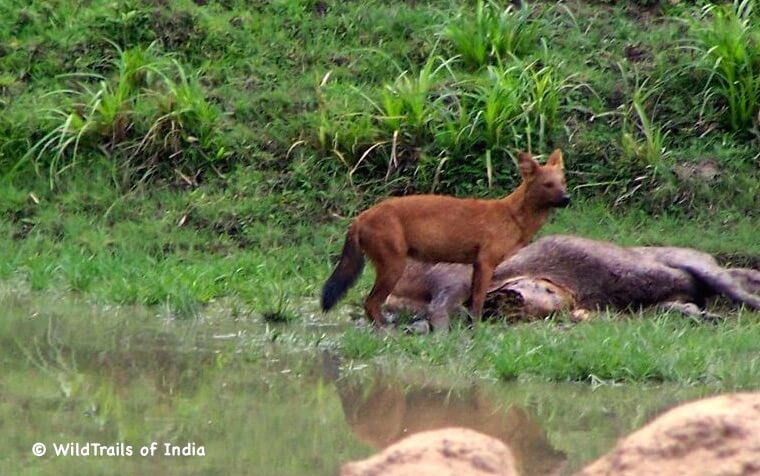
The Shenduruney forest – declared a wildlife sanctuary in 1984 gets its name from an endemic species of tree called Chenkurunji (Gluta travancorica). In the central region of this moist, mixed deciduous forest, spread over hilly terrain of over 100 sq km, is the 26 sq km artificial lake formed by the Parappara dam built across the Shenduruney and Kulathupuzha rivers.
Presence of wild populations of lion-tailed macaque, a highly endangered species. Presence of other wild animals like elephant, tiger, leopard, bear, Nilgiri langur, Malabar giant squirrel etc. High degrees in diversity of avi-faunal wealth – 267 species of birds were reported including migratory, endemic and endangered species. An artificial lake of nearly 18.69Sq.km within the sanctuary attracts a large number of water birds.
Tropical evergreen and semi evergreen forest cover a major area of the sanctuary. It has a presence of lion-tailed macaque, a highly endangered species. A brood of the highly elusive nocturnal forest bird, the Great Eared Nightjar was spotted for the first time at Shendurney Wildlife Sanctuary in Kollam, Kerala. Earlier, it was recorded from the Siruvani foothills in Tamil Nadu in May 1995. The first eco-tourism project in India, Thenmala Eco-tourism Project has been formulated in and around Shenduruney Wildlife Sanctuary.
Idukki Wildlife Sanctuary
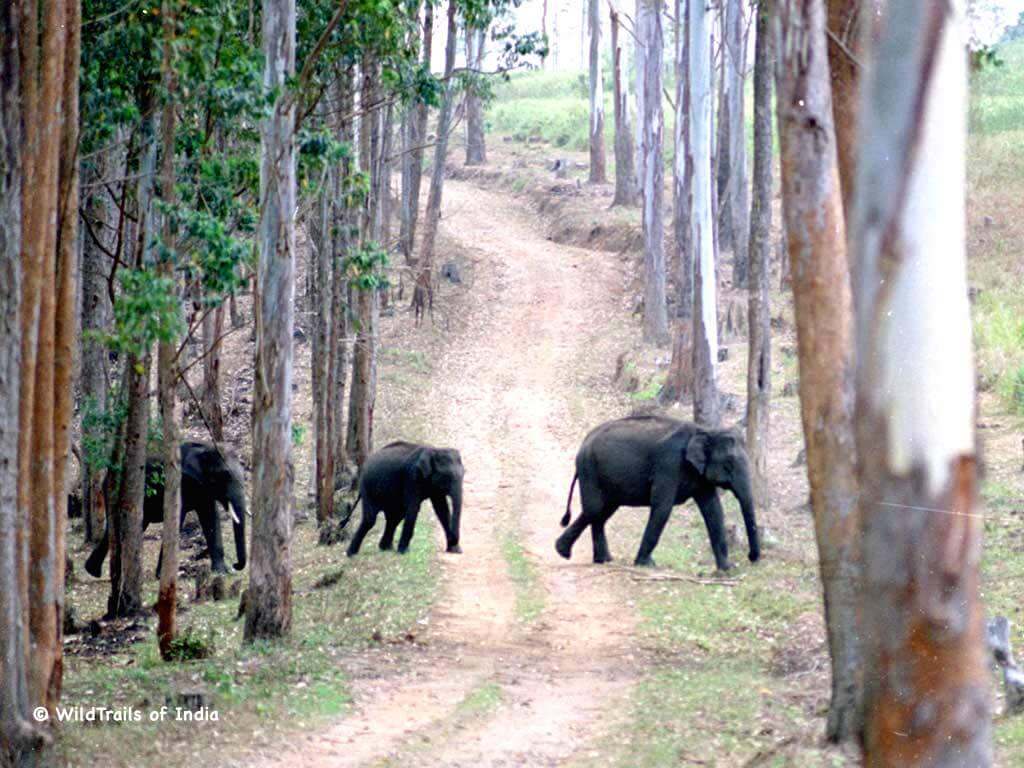
A repository of some of the rarest medicinal herbs, the Neyyar Dam located about 32 km from Thiruvananthapuram, is a popular picnic spot with a lake and a picturesque dam site. The lake formed by the dam across the Neyyar River is the bluest of blue, making boating irresistible for tourists.The Wildlife Sanctuary of which the dam is a part is the habitat of over a hundred species of fauna including Asian Elephant, Tiger, Leopard, Slender Loris and reptiles like King Cobra, Travancore Tortoise, etc. A crocodile breeding centre and a lion safari park are also located in the dam site.
Neyyar Wildlife Sanctuary
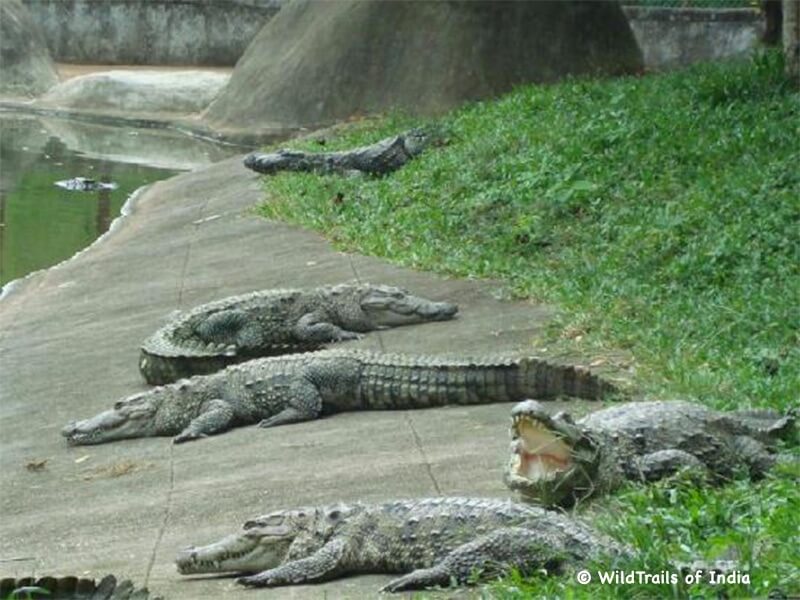
The Neyyar Wildlife Sanctuary in the southern state of Kerala in India is spread over the southeast corner of the Western Ghats, and covers a total area of 128 km2 (49 sq mi). Although it was declared as a sanctuary in 1958, not much was done about wildlife conservation, until 1985, when a separate wildlife wing was set up and as a result, conservation efforts have gathered momentum. A repository of some of the rarest medicinal herbs, the Neyyar Dam located about 32 km from Thiruvananthapuram, is a popular picnic spot with a lake and a picturesque dam site. The lake formed by the dam across the Neyyar River is the bluest of blue, making boating irresistible for tourists.
The Neyyar Wildlife Sanctuary of which the dam is a part is the habitat of over a hundred species of fauna including Asian Elephant, Tiger, Leopard, Slender Loris and reptiles like King Cobra, Travancore Tortoise, etc. A crocodile breeding centre and a lion safari park are also located in the dam site. There are 39 species of mammals, including Tiger, Leopard, Sloth bear, Elephant, Sambar, Barking deer, Bonnet macaque, Nilgiri Langur and Nilgiri tahr. 176 species of birds, 30 species of reptiles, 17 species of amphibians and 40 species of fishes are reported from the sanctuary
Parambikulam Wildlife Sanctuary
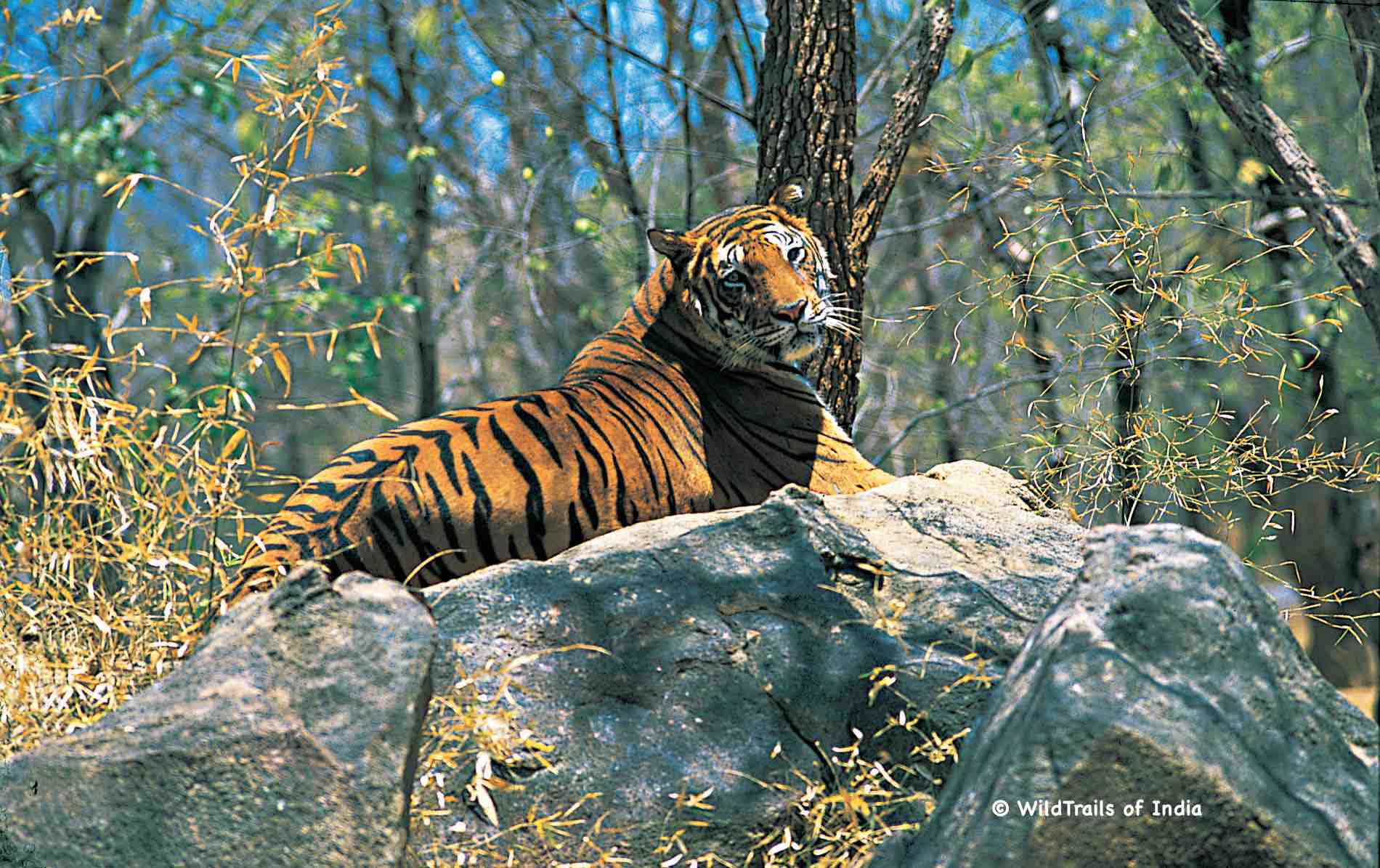
Parambikulam Tiger Reserve is a well protected ecological portion in the Nelliampathy – Anamalai landscape of the Southern Western Ghats in India. It is located in the Palakkad District of Kerala. It is one of the biodiversity hot spot in the world supports diverse habitat types and endemism. Considering its biological richness, abundance of wildlife and landscape beauty makes Parambikulam Tiger Reserve is one of the most attractive places in the entire stretch of Western Ghats. It was declared as Tiger Reserve during 2009 with total area of 643.66 Sq. Km, which includes core area of 390.89 and 252.77 Sq Km Buffer area.
Parambikulam Tiger Reserve is the most protected ecological piece of Anamalai sub unit of Western Ghats, surrounded on all sides by protected areas and sanctuaries of Kerala and Tamil Nadu, the sanctuary is endowed with a peninsular flora and fauna which are excellently conserved due to total protection and minimal human interferences. The sanctuary being a major ecological continuum from Peechhi to Eravikulam through Anamalai aids the large viable populations of wildlife. It is the home ground for different races of indigenous people who are as well an integral part of the prevailing harmonious ecosystem. The thick, opulent habitat of the sanctuary with ample water supply’s make it an abode for wildlife and there by for tourist who can have treasured memories of animal sightings and that of being in the lap of mother nature. It is popularly revered as ‘Nature’s own abode’.
To get the detailed info of the place, best season & time to visit, how to get there, safari details / boating/ trekking details, list of animals/birds you can expect to see there , entry/camera fees, and of course all of the accommodations nearby, please download the app or send us an inquiry:
Aralam Wildlife Sanctuary
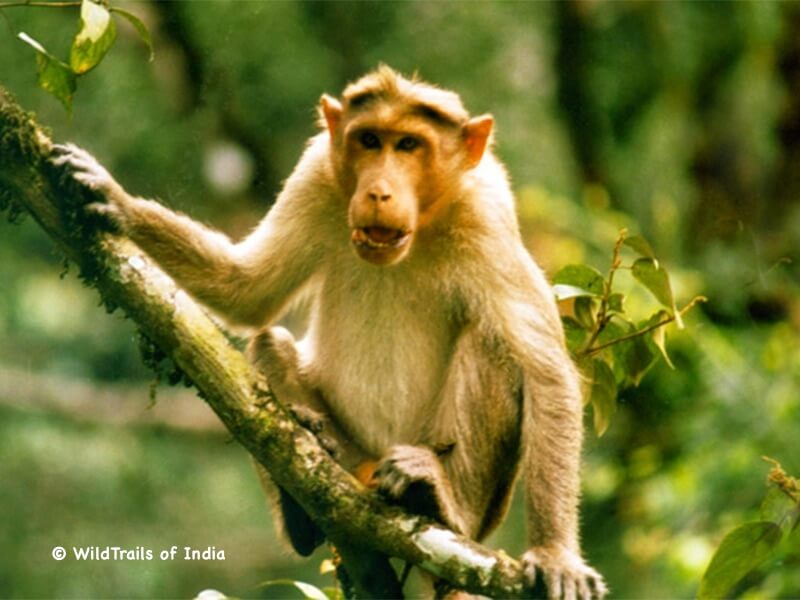
The Aralam Wildlife Sanctuary is spread over 55 sq km of undulating forested highlands on the slopes of the Western Ghats. The highest peak here – Katti Betta – rises to a majestic 1145 m above sea level. Covered with tropical and semi evergreen forests, the Aralam Sanctuary is home to a vast variety of flora and fauna endemic to the Western Ghats. Elephant, gaur, sambar, spotted deer, barking deer, Nilgiri langur, Hanuman langur, Malabar giant squirrel, etc can be seen here.
Aralam, a village in Thalassery, Kannur, is also noted for the Central State Farm, a 3060 hectare farm started in 1971 by the Government of India. This is one of the main production centres of hybrid coconut seeds in the country. Aralam Wildlife Sanctuary is the northernmost wildlife sanctuary of Kerala, southwest India. A mere 55 km2 (21 sq mi) in area and located on the western slope of the Western Ghats. It was established in 1984. The headquarters of the sanctuary is near Iritty.
Aralam wildlife sanctuary is the northernmost protected area of Kerala state, situated in the southeast part of Kannur District. The sanctuary area falls in Aralam, Kelakam and Kottiyoor revenue villages and is located in the Northwest slopes of Western Ghats contiguous with the forests of Coorg (Kodagu) district of Karnataka state. It was formed by carving out areas from the Odanthode Malavaram of Thalassery special division which was an erstwhile private forest, subsequently taken over by Govt. as per the provisions of the Kerala Private Forests (Vesting and assignment) Act 1971 and from the Kottiyoor RF of Wayanad Forest Division. The Vested Forest portion of the sanctuary is 32.64 km2 and the 22.36 km2 is part of Kottiyoor RF (Reserved Forest).
Kurinjimala Sanctuary
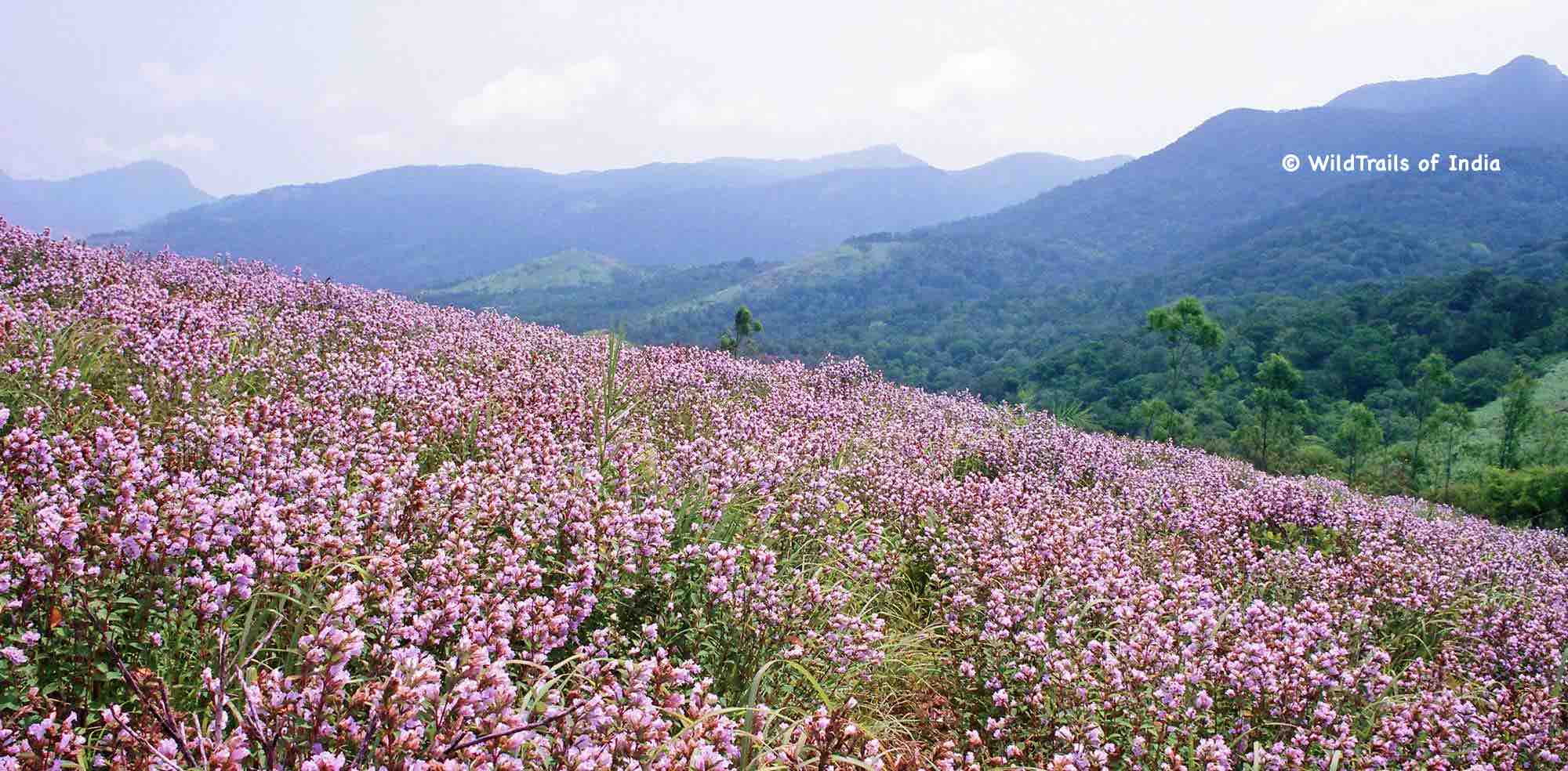
Kurinjimala Sanctuary protects the approximately 32 km² core habitat of the endangered Neelakurinji plant in Kottakamboor and Vattavada villages in Devakulam Taluk, Idukki district of Kerala State. The sanctuary is home to threatened species of elephant, Gaur, Nilgiri tahr and deer. The new sanctuary is contiguous to the Chinnar Wildlife Sanctuary to the northwest, Manjampatti Valley in Amaravati reserve forest of Indira Gandhi Wildlife Sanctuary to the northeast, Eravikulam National Park and Anamudi Shola National Park to the west, Pampadum Shola National Park to the south and the proposed Palani Hills National Park to the east.
The sanctuary provides continuity and connectivity to these five protected areas. The declaration of the sanctuary was made by the Kerala Forest Minister Benoy Viswam at the Neelakurinji Fest at Munnar on October 7, 2006. The Kurinjimala Sanctuary is habitat for diversity of many rare species of flora and fauna. The name of the sanctuary is derived from the word Kurinjimala, which means the mountain of Kurinji flowers.The Kurinjimala Sanctuary is famous for the Neelakurinji Plantation. Neelakurinji a blue flower that grows in abundance in the Idduki and Munnar region
Karimpuzha National Park (New Amarambalam Wildlife Sanctuary)
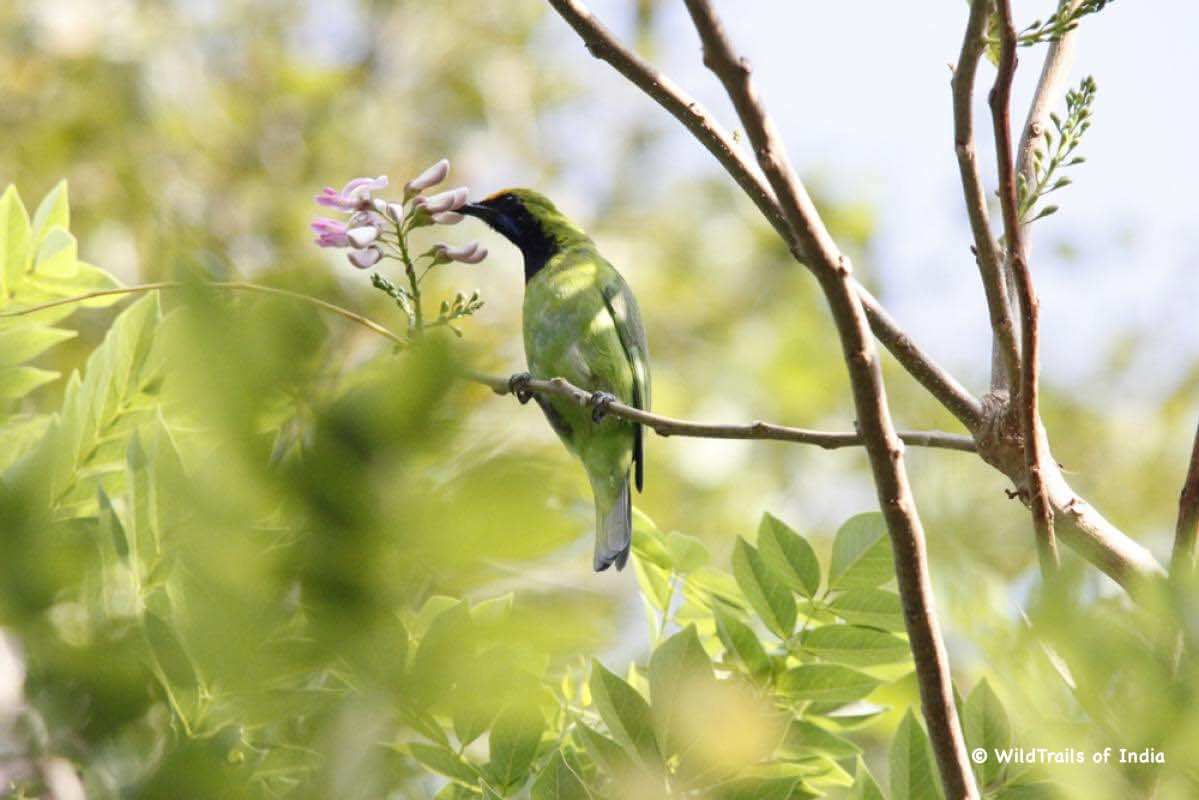
Karimpuzha National Park is a 230 km² proposed National Park located in the Nilgiri Hills, Palakkad district and Nilgiris district, Kerala and Tamil Nadu, in South India. Along with Mukhurti National Park and Karimpuzha National Park, Silent Valley National Park forms the core of Nilgiri Biosphere Reserve. This park is explored in 1847 by Robert Wight, the park remains one of the last uninterrupted territories of south Western Ghats montane rainforests and tropical moist evergreen forests in the country.
This national park has over 858 species of fauna that includes 34 species of animals and about 500 species of butterflies and moths. It is also an excellent location for birdwatchers as the park is home to over 292 species of birds that include Nilgiri wood pigeon, blue winged parakeet, grey headed bulbul, white bellied blue flycatcher, broad tailed grass wabler, Nilgiri pipit, etc. The state is taking care to make these national parks as great place to view animals and natural beauties and other botanical species. The lion tailed macaque is the most popular attraction in Silent Valley National Park. Nilgiri langur, mouse deer, gaur, fishing cat, stripe necked mongoose, panther, etc. are some of the other exotic wildlife species found in the park.
Mathikettan Shola National Park
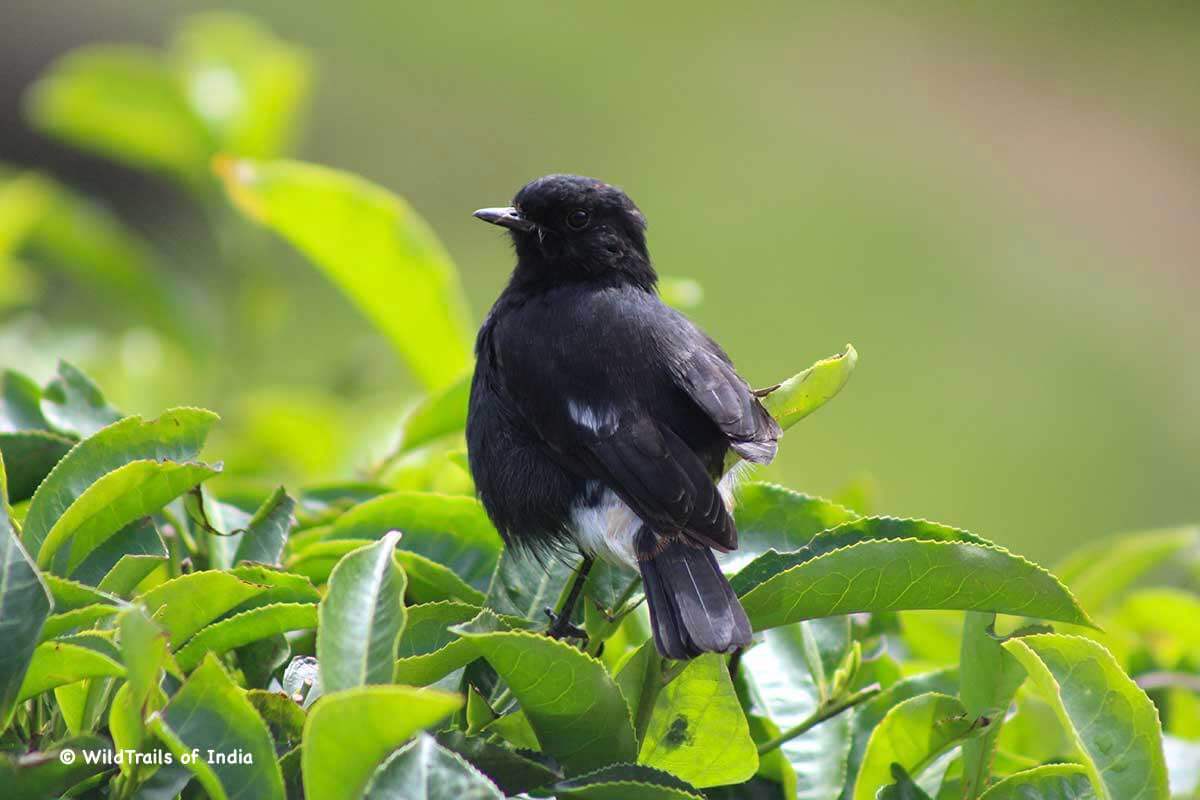
Mathikettan Shola National Park is a 12.82 km² national park in Poopara village of Udumbanchola taluk in Idukki district of Kerala state, South India.It notified area national park in November 2008.The name Mathikettan derives from the Tamil word literally meaning ‘mind confuser’, as the local people say that one forgets the path once he enters into the park.It notified as a national park to protect the wildlife and rich biodiversity of the area.The shola forest in the area is bestowed with unit with geological founal and floral and geomorphological wealth.
The Mathikettan Shola National Park attracts large numbers of adventure seekers with its trails that run through the forests providing amazing views of the region. Watching birds and wildlife in their natural habitat is a popular attraction among trekkers in the national park. A haven for wildlife photographers, they visit the national park and stay for long periods to capture the animals in their natural habitat. The forest is home to beautiful and rare animals like tigers, panthers, wild elephants, giant grizzled squirrel, flying squirrels, spotted deer and Nilgiri tahrs. The park abounds in snakes such asking cobras, pythons, vipers and rat snakes, turtles, crocodiles and lizards. Make sure you wear the appropriate clothing and footwear to safeguard yourself from bites of any kind.
To get the detailed info of the place, best season & time to visit, how to get there, safari details / boating/ trekking details, list of animals/birds you can expect to see there , entry/camera fees, and of course all of the accommodations nearby, please download the app or send us an inquiry:
Anamudi Shola National Park
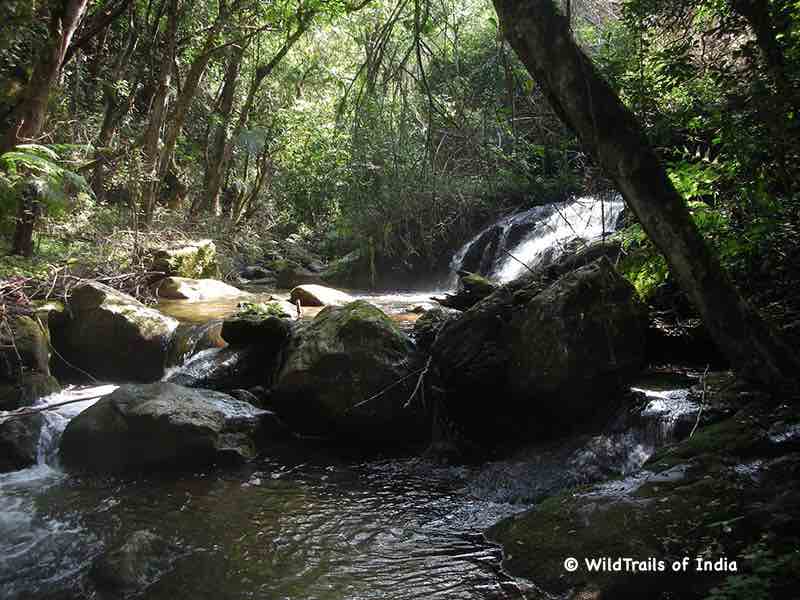
Anamudi Shola National Park is a protected area located along the Western Ghats in Idukki District, Kerala state, South India. It is composed of Mannavan shola, Idivara shola and Pullardi shola, covering a total area of around 7.5 km². Draft notification of this new park was released on Nov 21, 2003. The park is administered by the Kerala Department of Forests and Wildlife, Munnar Wildlife Division, together with the nearby Mathikettan Shola National Park, Eravikulam National Park, Pambadum Shola National Park, Chinnar Wildlife Sanctuary and the Kurinjimala Sanctuary.
Anamudi Shola National Park provides valuable wildlife habitat connectivity between Mathikettan Shola National Park, Eravikulam National Park, Pambadum Shola National Park, Chinnar Wildlife Sanctuary and the Kurinjimala Sanctuary, all of which surround this protected area. This national park forms part of the Anamalai sub-cluster, which was recently nominated for consideration for World Heritage Site status under UNESCO’s World Heritage Programme.
It is located very close to the Munnar hill station (40 km). The National Park is accessible from Kochi (160 km) and Coimbatore (150 km). The nearest railway station is at Aluva (150 km) in Kerala and Pollachi (100 km) in Tamil Nadu. The nearest town is at Munnar. 62 species of trees, 174 species of herbs and shrubs and 39 species of climbers are recorded from here. Among fauna, 100 species of butterflies and 232 species of moths belonging to 36 different families are recorded from here. 76 species of birds are also recorded from here. Tiger, Elephant, Gaur, Leopard, Sambar deer, Wild boar, Nilgiri langur and Giant squirrel are the common mammals seen here.
Pambadum Shola National Park
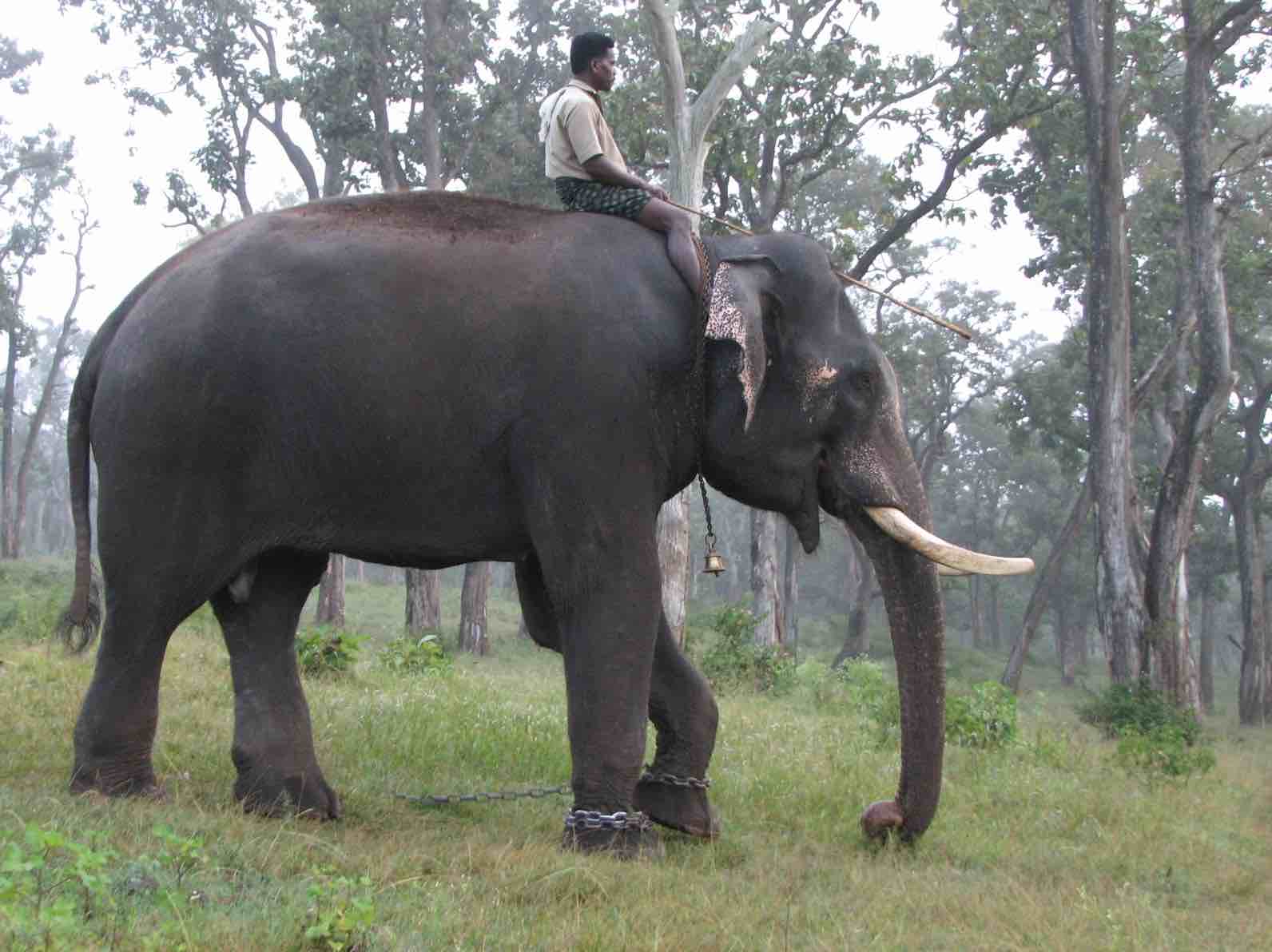
Pampadum Shola National Park is the smallest national park in Kerala state, South India. The park is administered by the Kerala Department of Forests and Wildlife, Munnar Wildlife Division, together with the nearby Mathikettan Shola National Park, Eravikulam National Park, Anamudi Shola National Park, Chinnar Wildlife Sanctuary and the Kurinjimala Sanctuary. The park adjoins the Allinagaram Reserved Forest within the proposed Palani Hills Wildlife Sanctuary and National Park.
The name´”Pampadum Shola” means, “the forest where the snake dances”, derived from three Tamil words, “paamp”, which means “snake”; “aattam”, means “dance”; and “cholai”, means “forest”. “Shola” may be considered as a mis-speller of “cholai”. The keystone species here is the highly elusive and endangered, endemic small carnivore – the Nilgiri marten. Leopards and Indian wild dogs are sometimes sighted at dusk or dawn, tigers are an important animal of the park. The Old Kodaikanal–Munnar Road nearby is closed due to the growing population of wildlife such as elephants, buffaloes gaur and Nilgiri langurs. Some notable birds found here include the Nilgiri wood-pigeon, white-bellied shortwing, vernal hanging parrot, blue rock-thrush, blue-capped rock-thrush and Nilgiri flycatcher, and black-and-orange flycatchers. 35 km away from the Munnar town in Idukki district, another prominent hill station in Kerala the Pambadum Shola is located in the eastern part of Southern Western Ghats of Kerala on the way to Vattavada. The region with its captivating beauty is fast becoming a favourite eco-tourism destination in Kerala. The green meadows, clear blue sky, clean air and the thick foliage are something irresistible for any tourist. Eco-tourism activities here are organized jointly by the Department of Forest and Eco-development Committees comprising members of the local tribal communities. This guarantees an authentic, secure and intimate experience of wilderness to the visitors.
Ranipuram Wildlife Sanctuary
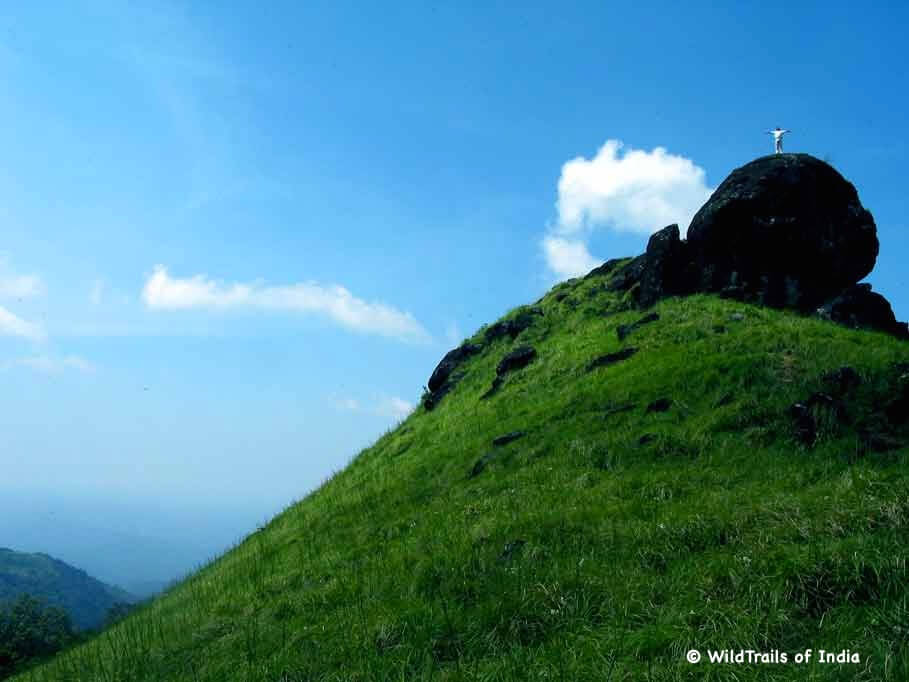
Ranipuram Wildlife sanctuary is an accumulation of grassy hills, a bio-diversity hotspot near Panathady town and lies on the Kerala-Karnataka border. Ranipuram was previously known as Madathumala. The wildlife sanctuary is linked to Kanhangad by Kanhangad-Panathur state highway. The proposed wildlife sanctuary of Kanhangad consists of an assortment of flora and fauna that are common only to the Western Ghats. This biodiversity hotspot still remains unexplored completely and there is a lot to study around it. It merges with the Talacauvery wildlife sanctuary of Karnataka. Ranipuram hill station falls in Panathady reserve and is the only spot in the district were we can find the Shola forest. Sholas are patches of stunted evergreen tropical and subtropical moist broadleaf forest found in valleys amid rolling grassland in the higher mountain regions of south India.
The Ranipuram wildlife sanctuary is home to different species of animals including the elephants, leopards, deer, wild dogs, wild boars, macaques, jungle cats, leopard cats slender loris, porcupines, malabar giant squirrels, malabar civet cat, many species of birds, rare butterflies and medicinal plants. Ranipuram (ooty of kerala) is a hill station located with in Kasargod district. Kottancheri-Talacavery mountain range. It is located about 48 kilometres east of Kanhangad between the Panathur and Malom towns. by road ranipuram is accessible from Panathady at kanhangad-panathur state highway.Other trekking paths through dens forest are available from panathur,maruthom and Malom which needs permission from forest officers. There are two trekking routes available through the South Western Ghats moist deciduous forests. Part of the way the climb is assisted by cut steps. The ambiance of the forest trail is remarkable and once you reach the “Mani” (grass covered hilltop) the view is superb. The undulating cloud-topped hills stretch up to the plains and ocean on the horizon. This is unexplored territory for the nature enthusiast and birdwatcher.
Attappadi Reserve Forest
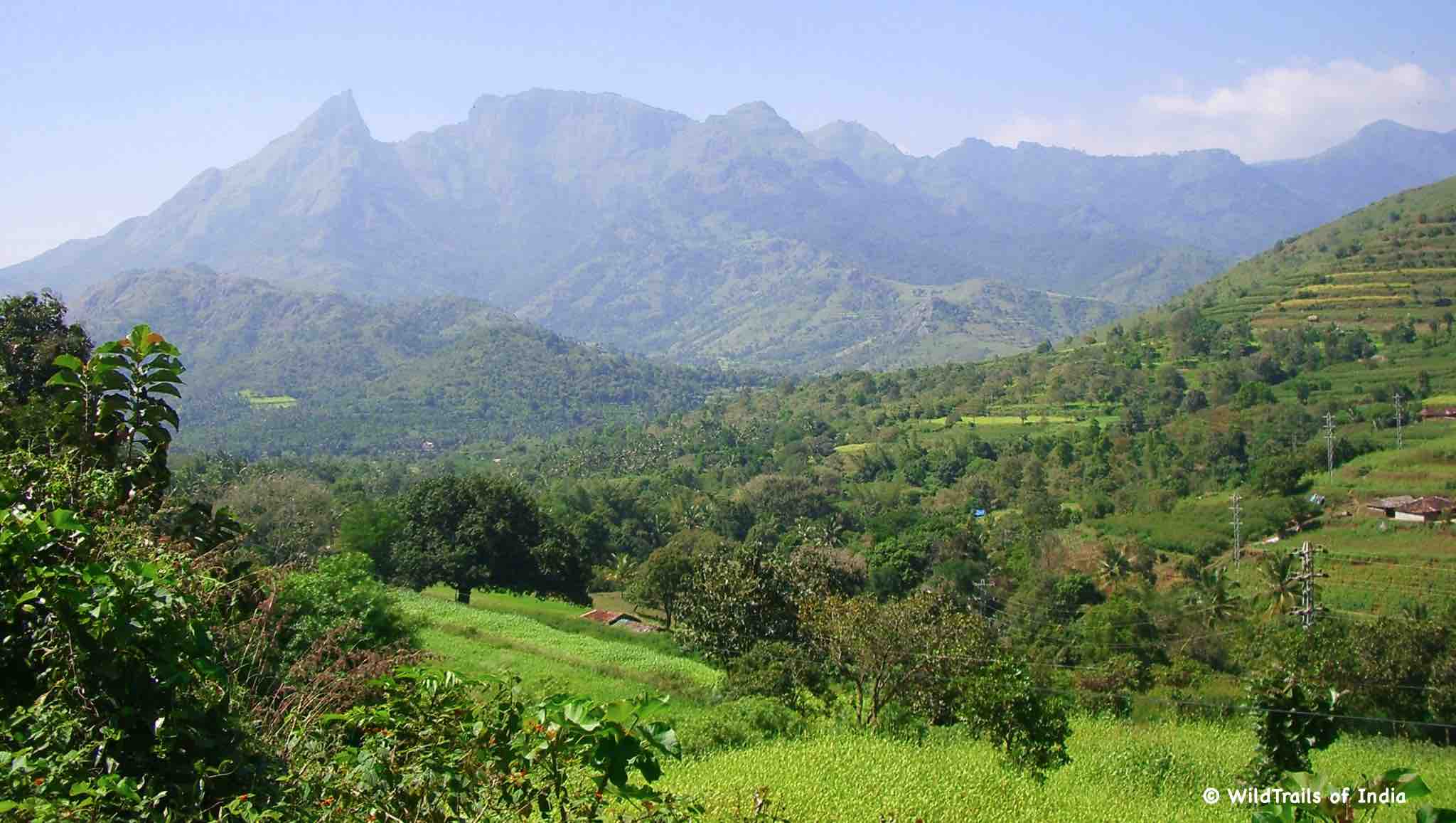
Attappadi Reserve Forest is a protected area comprising 249 km² of land covering the westernmost part of the 745 km² Attappadi block of Mannarghat Taluk in Palakkad district of Kerala, south India. Attappadi is an extensive mountain valley at the headwaters of the Bhavani River nestled below the Nilgiri Hills of the Western Ghats. It is bordered to the east by Coimbatore district in Tamil Nadu, on the north by the Nilgiris, south by the Palghat taluk and on the west by Karimba-I and II, Pottassery-I and II, and Mannarghat revenue villages of Mannarghat taluk of the Palghat District and Ernad taluk of the Malappuram district.
The 249 km² Attappadi Reserve Forest is an informal buffer zone bordering the Silent Valley National Park to the West. 81 km² of this forest was separated to become most of the new 94 km² Bhavani Forest Range which is part of the 147.22 km² Silent Valley Buffer Zone formally approved by the Kerala Cabinet on 6 June 2007. The elevation of Attappati valley ranges from 750 meters (2,460 ft) to the Malleswaram peak which rises to 1,664 meters (5,459 ft) from the center of the valley. The Bhavani River flows from the Northwest around the mountain in a tight bend past Attappadi village and continues to the Southeast.
Kadalundi Bird Sanctuary
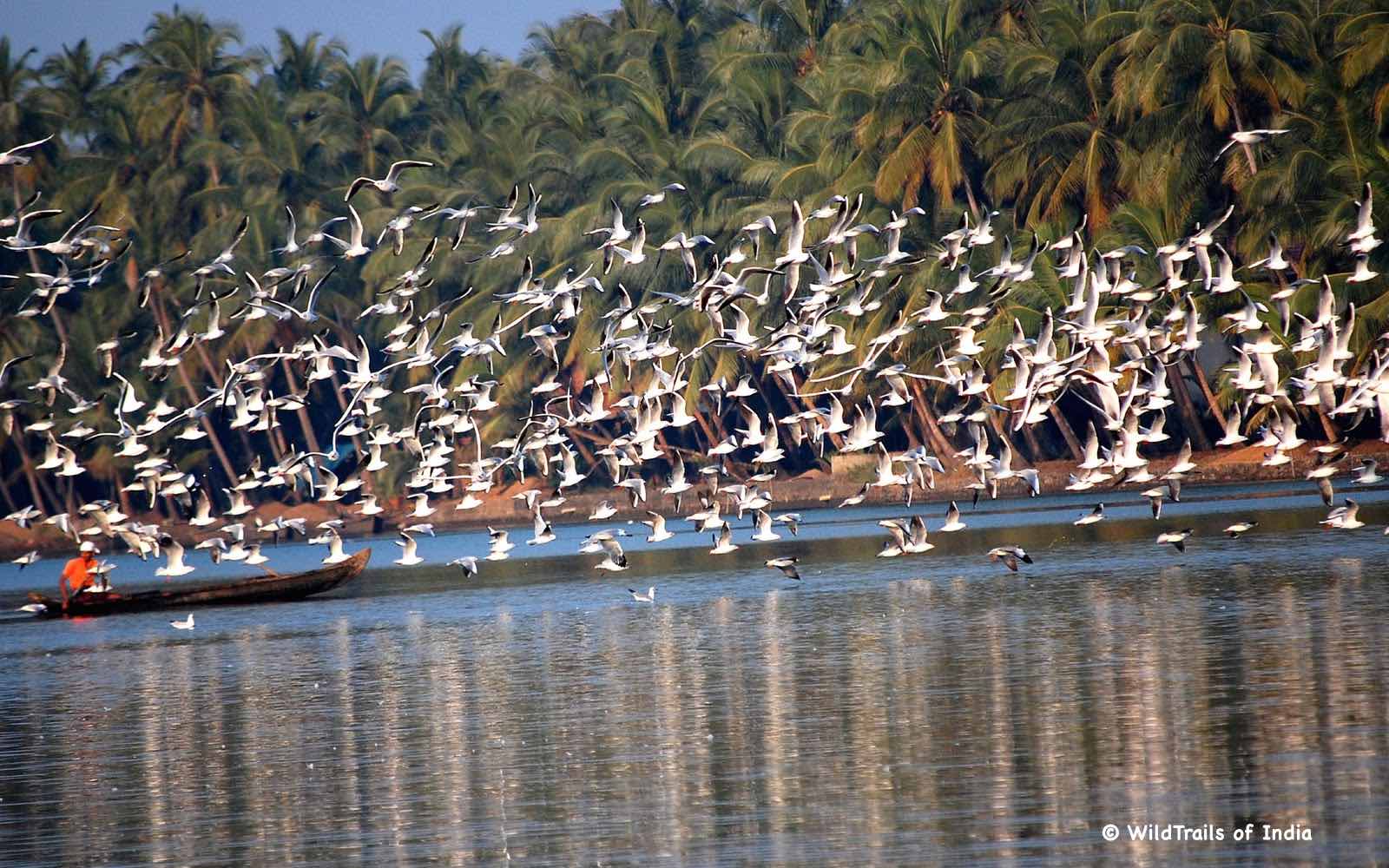
The Kadalundi Bird Sanctuary lies in the Malappuram District of the state of Kerala in India. It spreads over a cluster of islands where the Kadalundipuzha River flows into the Arabian Sea. The Sanctuary hill is around 200 m above sea level. It is 19 km from Kozhikode city centre. The nearest airport is Karipur International Airport, Kozhikode. Over a hundred species of native birds have been recorded in the sanctuary, including about 60 species of migratory birds which visit seasonally; these include terns, gulls, herons, sandpipers and cormorants. Notable species are whimbrels and brahminy kites.
The sanctuary is well known for a wide variety of fish, mussels and crabs. Kadalundi Bird Sanctuary provides shelter and ideal conditions to a number of migratory birds. These birds include Terns, Gulls, Herons, Sandpipers and Cormorants, which arrive on this sanctuary in the month of November and return to their respective regions by the end of April. Some other important bird species in the sanctuary are Whimbrels and Brahminy Kites.
Apart from birds, there is considerable population of different varieties of fish, mussels and crabs in the sanctuary. The sight of thousands of colorful birds flocking to a region of 2 sq. km offer a rare and captivating moment for the visitors. There are boat facilities available for tourists to enjoy the breathtaking beauty of the lush green plantation and bird population of this sanctuary. These boats provides a great way to see turtles found here. The best season to visit this sanctuary is from December to April, since it is the season for migratory birds to stay in this wildlife sanctuary.
To get the detailed info of the place, best season & time to visit, how to get there, safari details / boating/ trekking details, list of animals/birds you can expect to see there , entry/camera fees, and of course all of the accommodations nearby, please download the app or send us an inquiry:
————————————–
WildTrails of India – “One Stop Destination for all Indian Wildlife Enthusiasts“
PS: Please be a responsible wildlife tourist; No littering, No sounds, No feeding, no getting down from the safari jeep (when on safari), No phone calls. Remember that we are visiting their home and when we are there, let’s follow their rules.
[The WildTrails of India is the best way to get all the details about Indian wildlife sanctuaries (best travel times, safari details, animal sightings, forest accommodations pairing, wildlife related activities, prices, etc). Learn more about WildTrails of India here. ios App is here. Android and Web is on the way ]
To get the detailed info of the place, best season & time to visit, how to get there, safari / boating/ trekking details, list of animals/birds you can expect to see there , entry/camera fees, and of course all of the accommodations nearby, please download the app; Web booking is on the way too.


With 4 years of Sightings data + Extensive expert tracker network in jungles, our customers had the best wildlife experiences.
Buy Wildlife Fashion Accessories
Exclusive Online Store for wildlife products
Packages
Packages Loading...
Recent Posts







